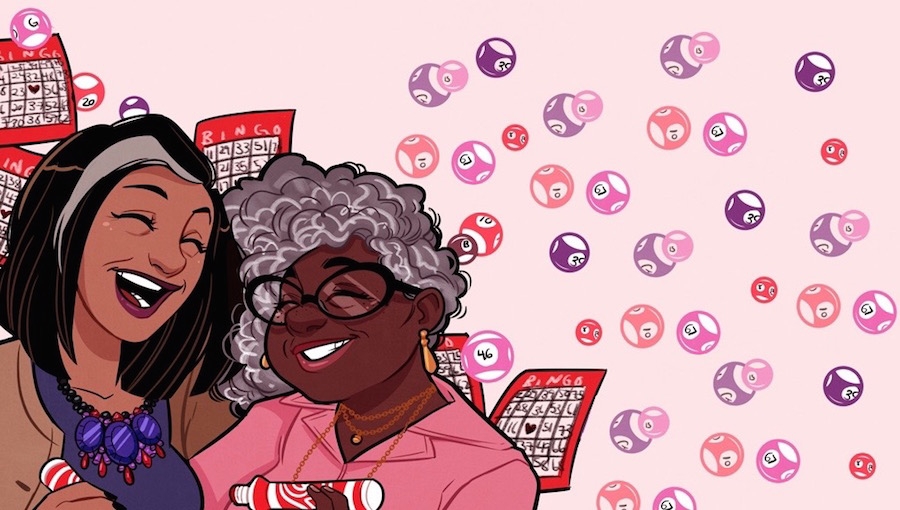Hazel and Mari are each other’s one true love in a time when same-sex attraction is seen as repulsive, and even sinful. Torn apart by their families, they each find socially suitable partners (men), marry, have children and grandchildren, and build their careers. When they eventually reunite, they find their love has remained over time, and this time, they can’t let it go. Bingo Love is a tale of heartbreak, social change, and redemption.
The graphic novel takes a hard look at social change but is honest about those places where social change, and queer acceptance especially, are not absolute. Hazel and Mari both experience resistance from their families, even in the contemporary timeline. Critics have compared it to Alison Bechdel’s Fun Home. While Bingo Love is far less melancholic in its form, it is definitely a text that speaks deeply and profoundly to an audience that has been far too long neglected in their fullness: lesbians and to lesbians of color, in particular. The characters’ racial diversity is front and center in this text as something to be loved, revered, and celebrated in the two protagonists, even while their queerness makes them objects of ridicule and scorn. The final note, however, is a positive one; the text leans into the possibility of true love, to the human right to have love at any age, and to the possibility of blended families. Overall, this text is beautiful and wholesome.
The art and coloring are both dynamic, and both aid in a kind of quirky, reverse-imperative character development. Part of the fun of the plot is the way it hinges on ironic returns; Hazel and Mari meet as teenagers while at Bingo with their grandmothers and reunite as grandmothers at the same Bingo hall and in the presence of Hazel’s daughter. Hazel and Mari are styled in parallel by their defining features in the early narrative: Hazel’s brightly colored, tea-length dresses, flowing blouses, and round shape and Mari’s preference for neutral tones, her tall and slim figure which is accented by straight-lined clothing. These remain, even as the women’s features show their increasing age. The effect is that the reader is able to recognize the aforementioned ironic returns along with the characters, but also that their love comes to represent something at each woman’s respective core that develops but does not change.
Creative Team: Tee Franklin (Writer), Jenn St-Onge (Art), Joy San (Coloring)
Publisher: Image Comics
Click here to purchase.

